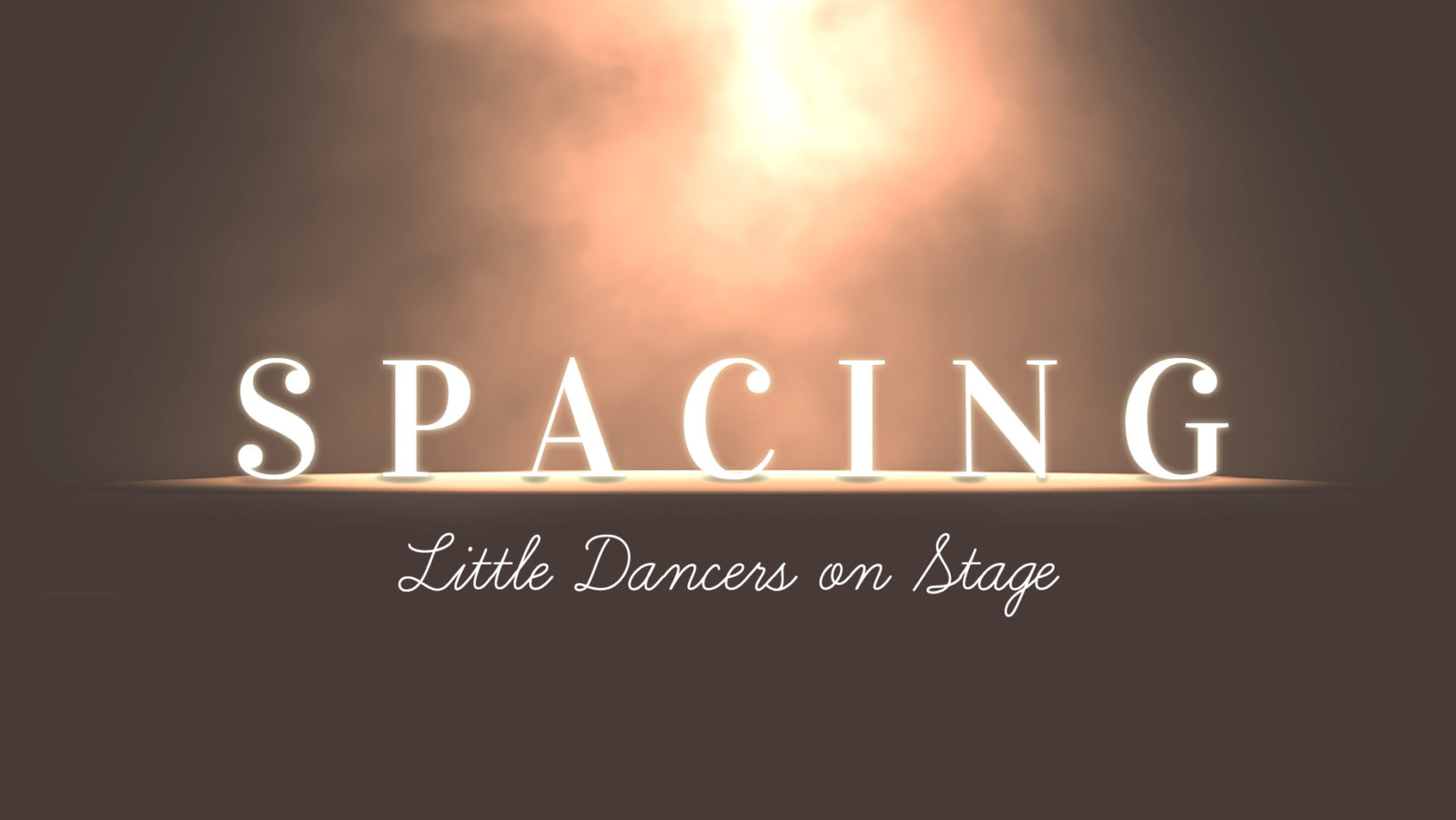Spacing can be a true disaster on stage. For anyone. I remember very specifically one moment in my professional career where I ran into another dancer. Literally, just smacked right into her. Yes, my director let me know how unhappy he was in a not so subtle way.
Spacing little dancers is truly a very difficult task. It can feel daunting. For anyone who doesn’t teach ballet, they likely would not understand what the big deal is. But for those of us who do teach ballet—WE KNOW!
From Class To Stage
If we can keep things on stage as similar to the classroom setting as possible, things will be far better for our students. This means if you use tape to mark their spots in class, use tape to mark their spots on stage. If you use numbers lined up at the front of the room, then use those at the front of the stage.
The point is, do use SOMETHING in class to help them know where their own space is. It is not realistic to not teach about spacing throughout class and then expect them to learn about this while also learning a whole dance. It is too much new information at once.
Space Smartly (in class and on stage)
If students are placed too close to one another, they will be more easily distracted and more likely to talk to each other. They will also feel crowded, which for some dancers will turn them off to ballet entirely.
If they are placed too far apart they lack that important sense of belonging. Everything feels too pulled away and it is hard for them remain engaged. They will wander off into their own world. Some might even wander right off the stage and into the wings if they are placed too far out.
Good spacing should allow for each student to stand in their own hula-hoop without their hoops touching anyone else’s hoops.
Circle Up
I like my 4-6 year olds to move in a circle on stage. I work it into nearly every single dance I do for them. Getting them to that circle is a challenge, but one worth taking because ,when they accomplish it, the class will be a much stronger team.
I teach this in 5 steps:
Step 1: Hold hands and make a circle.
Step 2: Stretch the circle big but keep holding hands. DO NOT pull on each other.
Step 3: Keep your feet planted, but let go of hands.
Step 4: Take 3 NORMAL sized steps backwards.
Step 5: Face the direction of the circle.
When I have them move into a circle in a dance, they go through these steps in a methodical way. I do not rush it. I feel this skill is worth putting into a performance.
For my preschoolers, I am far more relaxed. I do have them dance on stage in a circle but they have a spot to go to. There is no making the shape of a circle together. They practice going from their “center spots” to their “circle spots”. We practice this a lot.
Keep It Simple
Formations are a great choreography tool, but I would suggest not having your young dancers move to more than 2 or 3. It becomes too cluttered, and the risk they will get lost in the switching about is too great. I also do not recommend diagonals for dancers younger than 7 years old.
A typical dance for my littlest dancers would look something like this:
- Begin in center spots.
- Move to a circle.
- Go back to center spots for finish.
OR a move advanced class:
- Begin in a line upstage.
- Move to center spots.
- Move to a circle.
- Go back to the line upstage.
- Move to center spots for finish.
*NOTE—My younger dancers always finish their dance on their center spots. I do not do group poses on stage with them. I find this cleaner.
My biggest takeaway as a long time ballet teacher of little ones when it comes to spacing is that if they don’t have the spacing of a particular thing accomplished during class I should not put that thing in a dance. My second biggest takeaway is to practice the transitions from one formation to the next over and over and over again. My final takeaway: It will never be perfect. It will always be messier than I imagined. Release the need for perfection. Embrace the messiness of growth.
Related Articles


Comments
No comments for this post.
Add Comment